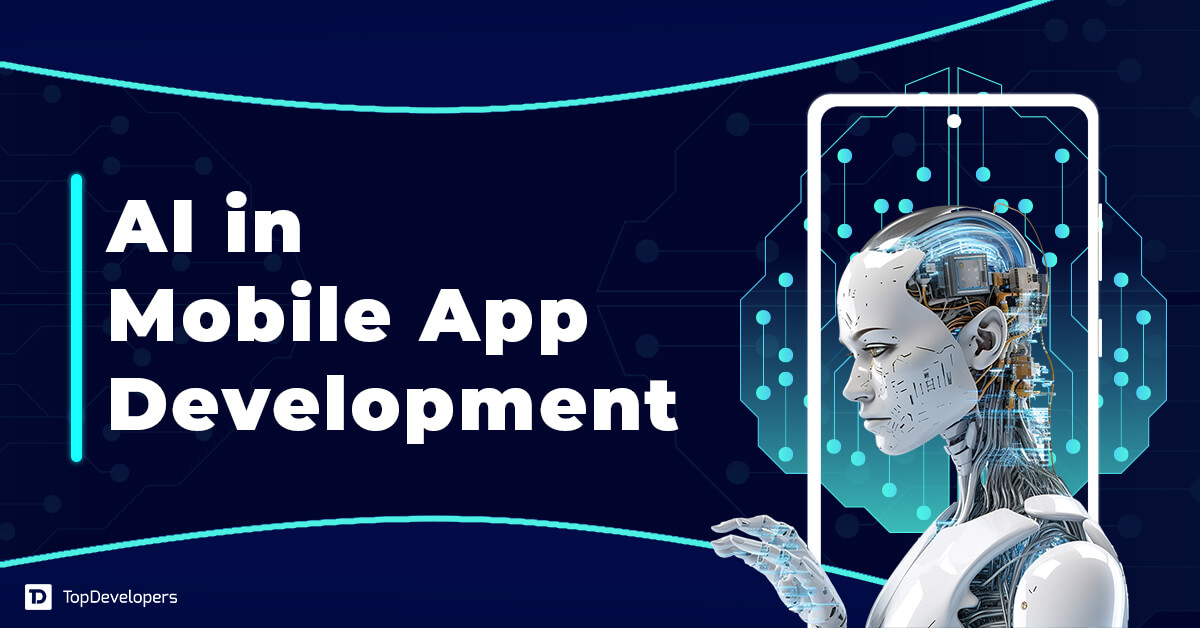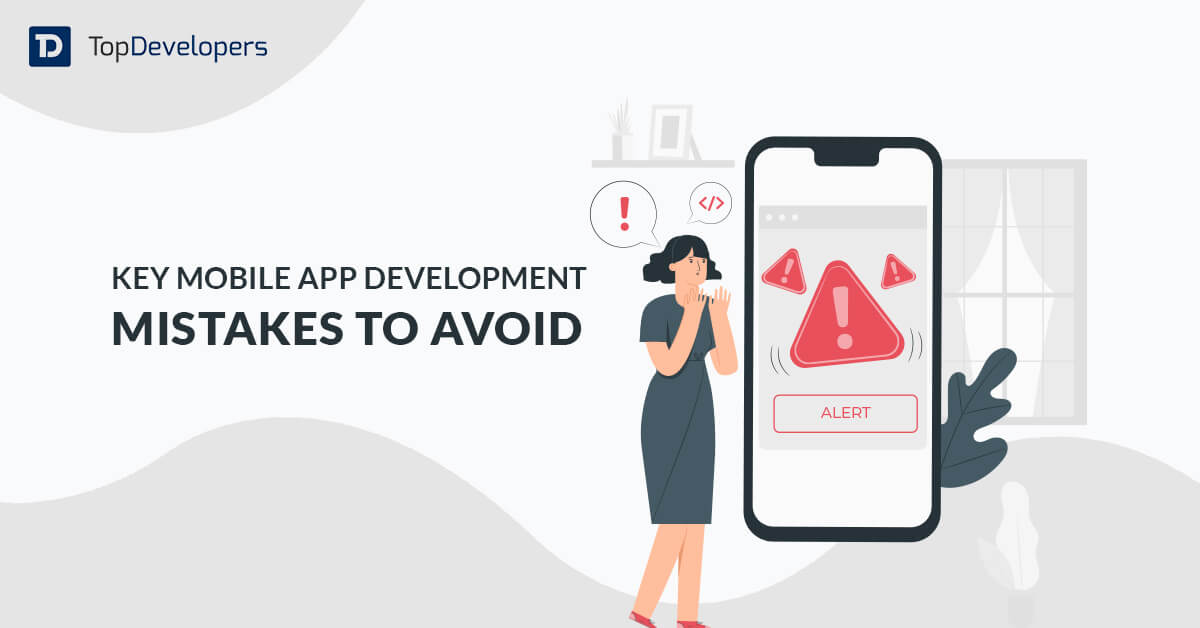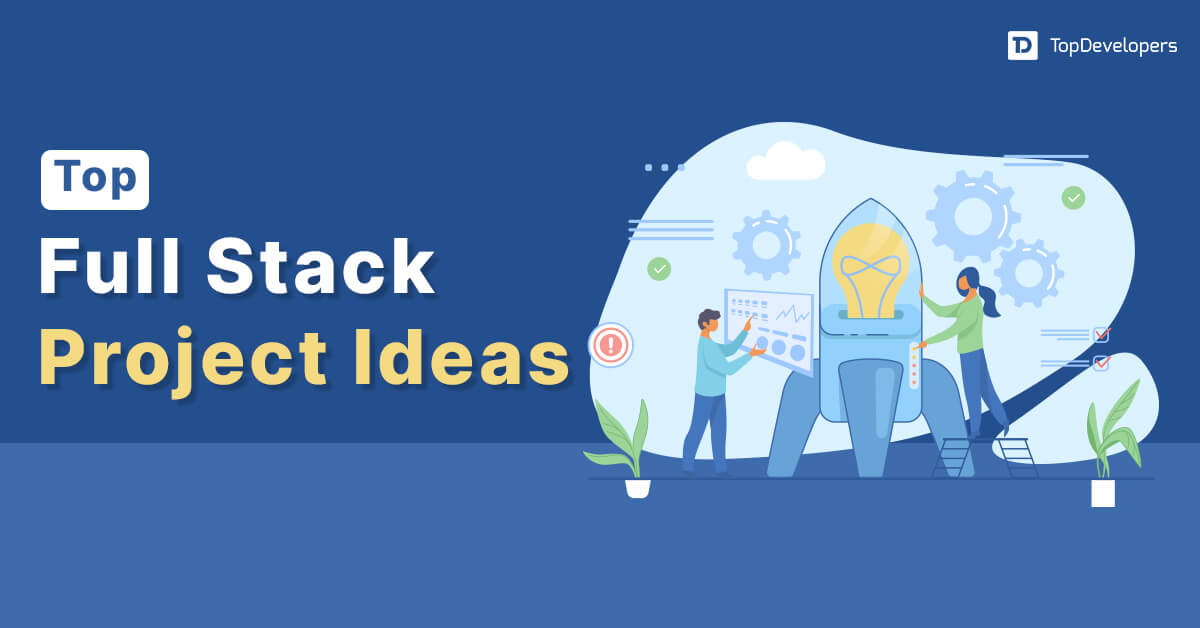
With more than 7 billion mobile apps in the world, app usage is continuously growing with no signs to get slowing down. It showcases the growing importance of mobile app development for businesses.
However, not all mobile apps are actively used by people globally. The reason not all the apps get optimal success in terms of app downloads and usage is- that essential application features are not included, the design is poor, or some other issues. The leading mobile app development companies cite basic features available in the mobile app as a prominent reason behind its popularity and usage.
The importance of having the best features in your mobile app cannot be overstated. They are critical for user satisfaction, competitive advantage, increased engagement, positive reviews, monetization opportunities, and long-term success. By prioritizing the development of such features, businesses can get created a compelling app that stands out in the market and meets the evolving needs of users. In this blog, we will shed light on the mobile app features that should be included while developing your application. Let’s dive in!
Table of Contents
- 21 Basic Features Must-have in Your Mobile App
- Intuitive Navigation
- Utilize the Power of Push Notifications
- Analytics & Reporting
- Search Option
- Data Privacy and Security
- Location Management
- Payment Gateway Integration
- Face Detection
- Speech Recognition and Voice Search
- Personalization
- Simplicity
- Keep the App Size Small
- Data Collection Opt-Out
- Data Caching
- Social Media Integration
- Responsive App Design
- Include Machine Learning
- Integration of Augmented Reality
- Go cross-Platform
- User Feedback Provision
- Offline Ability
- Which Features should you keep in the Mobile App?
21 Basic Features Must-have in Your Mobile App
The complete guide for mobile app development can help you build the app correctly. Additionally, you must know the features that target users are looking for and persuade them to use the app forever. Here’s the mobile app features list that you should not overlook for grandeur success.
Intuitive Navigation
Intuitive navigation is indeed a crucial functionality of a mobile app as it enhances the overall user experience and makes the app easier to use. Design an app with a logical menu structure that organizes the mobile app’s features and content clearly and consistently. Use familiar icons or labels that users can easily understand and follow.
Incorporate familiar touch gestures such as swiping, pinching, tapping, and dragging to navigate through different sections of the app. Ensure that these gestures are responsive and provide visual feedback to the user. Include persistent navigation elements like a navigation bar or tab bar that remains visible throughout the app. This allows users to access important sections or features from anywhere within the mobile app, providing a sense of continuity and ease of navigation.
Utilize the Power of Push Notifications
Push notifications are proven to be more effective than other notifications like emails and messages. You can connect with your audience directly using push notifications. Push notifications are an effective way of ensuring constant engagement with your mobile app user. You can send one or two push notifications daily to keep your customers engaged. Push notifications allow you to connect with your audience deeper and offer them what they want to see. For instance, combined with data analytics, you can send personalized push notifications to your customers. This way, you can improve your conversion rate and propel the growth of your mobile app.
A push notification can contain either a short text, an attractive graphic, or both. The best part about mobile app push notifications is that you can personalize them. For instance, if you have a food delivery app, you can send push notifications containing offers on the user’s favorite food items. One can also share the notification regarding the restaurant’s offers such as discounts and free delivery at doorsteps. You must identify your users’ tastes to send more conversion-driving push notifications that help to increase conversion.
Analytics & Reporting
Analytics and reporting are user-friendly mobile app features that provide insights into user behavior, app performance, and key metrics. It benefits businesses in various ways such as tracking user interactions within the app, such as screens visited, features used, and actions taken. it helps to gain a deeper understanding of how users engage with your app. This helps to uncover areas of your mobile app for improvement.
Tracking app performance metrics like loading times, response times, crashes, and errors helps identify performance bottlenecks, bugs, or compatibility issues on different devices or operating systems. It further helps to optimize the app’s performance and deliver a smoother user experience. Besides, insights into user segmentation and personalization help to enhance user engagement and retention.
By incorporating analytics and reporting features into mobile app development, businesses can gather valuable data, make data-driven decisions, optimize user experiences, prioritize data security, and continuously improve their app’s performance and functionality.
Search Option
The search feature enables users to quickly find specific content, products, or features within the app. As apps grow in size and complexity, finding desired content or information can become challenging. The search option must allow users to bypass navigation menus and directly search for what they need, saving time and effort.
Real-time suggestions based on past searches, browsing history, or user behavior are included, which increases the relevance of the search results and enhances the user experience. The search results are refined with filters and advanced search options that allow users to narrow down results based on specific criteria like price range, date, location, or other relevant parameters.
Integrating voice search functionality into the app can provide an additional layer of convenience wherein users can simply speak their search queries instead of typing them. Also, offline search functionality can be valuable which enables users to search for previously accessed content even when they don’t have an active internet connection.
Data Privacy and Security
Data privacy and security are paramount considerations in today’s digital landscape where user data is increasingly valuable and vulnerable. Following some practices contribute to maintaining strong data privacy and security in a mobile app.
Implement robust authentication mechanisms, such as two-factor authentication (2FA) or biometric authentication (fingerprint, face recognition), to ensure that only authorized users can access the app and their data. Encrypt sensitive user data, both in transit and at rest, using industry-standard encryption algorithms so that it won’t get intercepted, even if there is a security breach or data leakage.
Implement stringent security measures on the server side, including firewalls, intrusion detection and prevention systems (IDS/IPS), and regular security audits. If your app integrates with third-party services or APIs, carefully vet their security practices and ensure they comply with privacy regulations such as GDPR, CCPA, HIPAA, and others.
For instance, industries like pharma have data protection laws like HIPAA. If you are developing a pharma app that needs to collect patient data, you need to develop a HIPAA-compliant app. Note that HIPAA is a U.S. law and does not apply to pharma apps operating in other countries.
Similarly, there are region-based data security laws like the GDPR laws for the European Union. If your app deals with the data of citizens of the European Union, then you need to build a GDPR-compliant app. One small data breach can wreak havoc on your reputation. Hence it is important to ensure watertight security for your mobile app.
Location Management
Management of location allows users to control and manage how their location information is used within the mobile application. With location permissions and an opt-in approach, the users are requested to share their location information. It allows businesses to offer valuable and relevant location-based services within the app, such as personalized recommendations or location-aware notifications.
Geo-fencing capabilities help to create virtual boundaries and trigger notifications or actions when users enter or leave specific locations. If the app requires geolocation tracking in the background, clearly communicate this to users and provide options to customize background location settings to minimize battery consumption associated with continuous background location tracking.
Advantages Of Incorporating Geolocation Feature In Mobile App
Payment Gateway Integration
A payment gateway offers a variety of payment options to cater to different user preferences and regional requirements. This can include credit/debit cards, digital wallets (e.g., Apple Pay, Google Pay), bank transfers, or alternative payment gateways and methods like PayPal or cryptocurrencies. The custom mobile app development services facilitate the payment gateway integration that businesses choose.
Compliance with industry-standard security protocols, such as PCI DSS ensures sensitive user payment data remains safe during transmission and storage. The capability to easily enter payment details, select payment options, and complete transactions on all the devices at speed makes the users happy.
Face Detection
Innovative app feature that involves identifying and analyzing human faces within images or live camera feeds. Face detection feature enables biometric authentication, allowing users to securely access the app or specific features using their facial features as a form of identification. This provides a convenient and secure alternative to traditional password-based authentication methods.
Nowadays, business apps are using face detection algorithms to analyze facial expressions and emotions, for gaining insights into user sentiment and engagement. This information is valuable for market research, feedback analysis, or emotion-driven app experiences.
Speech Recognition and Voice Search
Speech recognition happens to be one of the trending mobile app features as it is more convenient than typing. For example, Voice search allows users to have a truly hands-off experience. According to a survey, 7 out of 10 people prefer to use voice search instead of type search. The growing popularity of voice search warrants attention. As an app owner, you should include voice-based app navigation for your users. Voice recognition technology can boost the success prospects of your app.
Voice navigation in mobile applications is also a useful feature for people who cannot use their hands due to injury or inability to do so.
Personalization
Personalization feature is common to mobile apps that tailor the user experience based on individual preferences, behavior, and location data. It enhances user engagement, satisfaction, and loyalty as customized recommendations align with users’ interests that they are looking for.
Personalized onboarding, adaptive user interface, personalized offers and discounts, and user-generated content helps in effectively implementing personalization in the mobile app DNA. It helps in creating a highly engaging and tailored app experience that resonates with individual users, fostering a sense of connection and loyalty.
Simplicity
Simplicity focuses on creating a straightforward and intuitive user experience. By prioritizing simple mobile app design, you can enhance usability, reduce user friction, and improve overall user satisfaction. It includes minimalistic design, intuitive navigation, clear and concise content, and streamlined onboarding. Also, features like auto-fill, autocomplete, or input validation streamline data entry.
Remember, simplicity does not mean sacrificing functionality. It is about prioritizing essential features, removing unnecessary complexities, and delivering a seamless user experience. It won’t be an overstatement to say what makes a great mobile app is- simplicity.
Keep the App Size Small
Users’ mobile phone memory is already occupied by several apps. Therefore, the app size of your mobile app should be small to download. It’s desirable to have a small-sized app because it results in quicker download and installation times, lower data consumption, better performance, and thus increased user adoption.
A smaller mobile app size reduces the likelihood of users abandoning the download or update process. With asset compression, code minification techniques, modularization, dynamic loading, and resource optimization, a small app size target can be achieved.
Data Collection Opt-Out
The option to opt out of data collection takes the users’ data privacy to the next level. This feature improves the users’ control over data by allowing them to decide whether they are comfortable with their data being collected and used by the app. Businesses can promote transparency and build trust as users see business respect their privacy choices and provide clear options for data collection.
It also helps in complying with privacy regulations such as GDPR which includes an opt-out feature. What’s more? Businesses can focus on collecting the data that is truly necessary for your app’s functionality and avoid unnecessary data accumulation, which leads to unnecessary data storage costs and data management challenges.
Data Caching
Data caching stores and retrieves data locally on the device to improve mobile app performance and user experience. The caching data when stored locally on the device, the app’s content loads faster as retrieving data from a remote server is not required. Thereby reducing network latency and load times.
Data caching enables offline access, improves responsiveness, facilitates personalized content delivery, optimizes resource utilization, and conserves battery life. It reduces dependency on unreliable networks as users can access cached content smoothly, even if the network is unstable.
Social Media Integration
Most modern-day mobile apps now include social media integration. Simple social media sharing buttons allow users to directly share content from the mobile app easily. This way, you get free- word-of-mouth publicity, a powerful form of app marketing. As more users share their content, the mobile app will benefit from the increased reach derived from social media presence. The key to great social media integration is to make the social sharing buttons easily accessible to mobile app users.
Responsive App Design
Responsive app design is one of the most important mobile app development features. Ensure that your app is built using responsive app design principles so that the app can easily acclimatize to any screen size. The mobile app should work seamlessly on small smartphones as well as large tablets. By incorporating the responsive design principles, ensure that your app performs according to expectations irrespective of the device it’s running on.
Include Machine Learning
Today data science has made its presence felt in several business spheres. Machine learning is one of the hottest mobile app development trends. By utilizing data science and machine learning in mobile apps, you can increase sales through accurate customer targeting. Integrate machine learning into your app to learn about the behavior patterns of your targeted customers. This way, you can target your customers in a better way, boosting the conversion rate.
Integration of Augmented Reality
Augmented Reality (AR) is one of the most exciting mobile app development features that has come up in recent years. AR allows brands to provide users with a chance to virtually experience their products. Google and Apple promote AR app development by providing ARKit for iOS and ARCore for Android. The amalgamation of virtual and real worlds can prove beneficial for those industries that want to introduce new experiences to their users.
Go cross-Platform
You can increase your reach amongst your users by going for cross-platform app development. It is a cost-effective option because you don’t need to build two separate native apps to cater to iOS and Android users. A cross-platform app can work seamlessly on both iOS and Android devices. With the emergence of cross-platform app development frameworks like Flutter and React Native, it is now possible to build cross-platform apps with near-native performance.
User Feedback Provision
A majority of mobile app users will have some feedback regarding the app. Whether positive or negative, a user’s feedback is precious. Using user feedback, you can improve your app quickly. Most users are not interested in providing feedback if it is too cumbersome to do so. Ensure that your users can provide their reviews and ratings easily.
Offline Ability
Internet connection can be low in many areas, especially in developing countries. You can gain an edge over your competition by providing an offline access feature in your mobile app. Although it’s impossible to provide every capability offline, ensure that you provide the basic ones. This way, your users will be able to do some basic functions even when the internet connection is not good or the user is offline.
Which Features should you keep in the Mobile App?
Mobile apps are always built to meet the unrealized need of the users which helps businesses seize an extra edge in the market. It starts with identifying user pain points for mobile apps in niche industries followed by creating a list of basic features. The mobile app features play a vital role in appealing to users or frustrating them, which appears in the online reviews they provide. Online reviews ultimately impact business revenue that matters a ton to businesses.
Realizing the importance of mobile app features, in this blog, we have enlisted the best user-friendly features that leading mobile apps have. Explore the features of mobile apps and keep the important ones that make your mobile app the best in any app store.
FAQs About Features that Make a Mobile App User-Friendly
What features should a mobile app have?
The mobile app must be easy to navigate, load pages at speed, be responsive, secure to use, and have built-in integrations.
What are the most important things you would consider when developing a mobile app?
When a mobile app is developed, businesses should consider the following things- app requirements, app features, development cost, scalability needs, user experience, and target audience needs.
How do I choose the best features for my mobile app?
You can select the best feature for your mobile app by conducting market research, defining the app’s purpose, determining success parameters, user requirements, and prioritizing features.
 Avantika Shergil
| Jun 30, 2023
Avantika Shergil
| Jun 30, 2023
An enthusiastic Operations Manager at TopDevelopers.co, coordinating and managing the technical and functional areas. She is an adventure lover, passionate traveler, an admirer of nature, who believes that a cup of coffee is the prime source to feel rejuvenated. Researching and writing about technology keeps her boosted and enhances her professional journeying.





